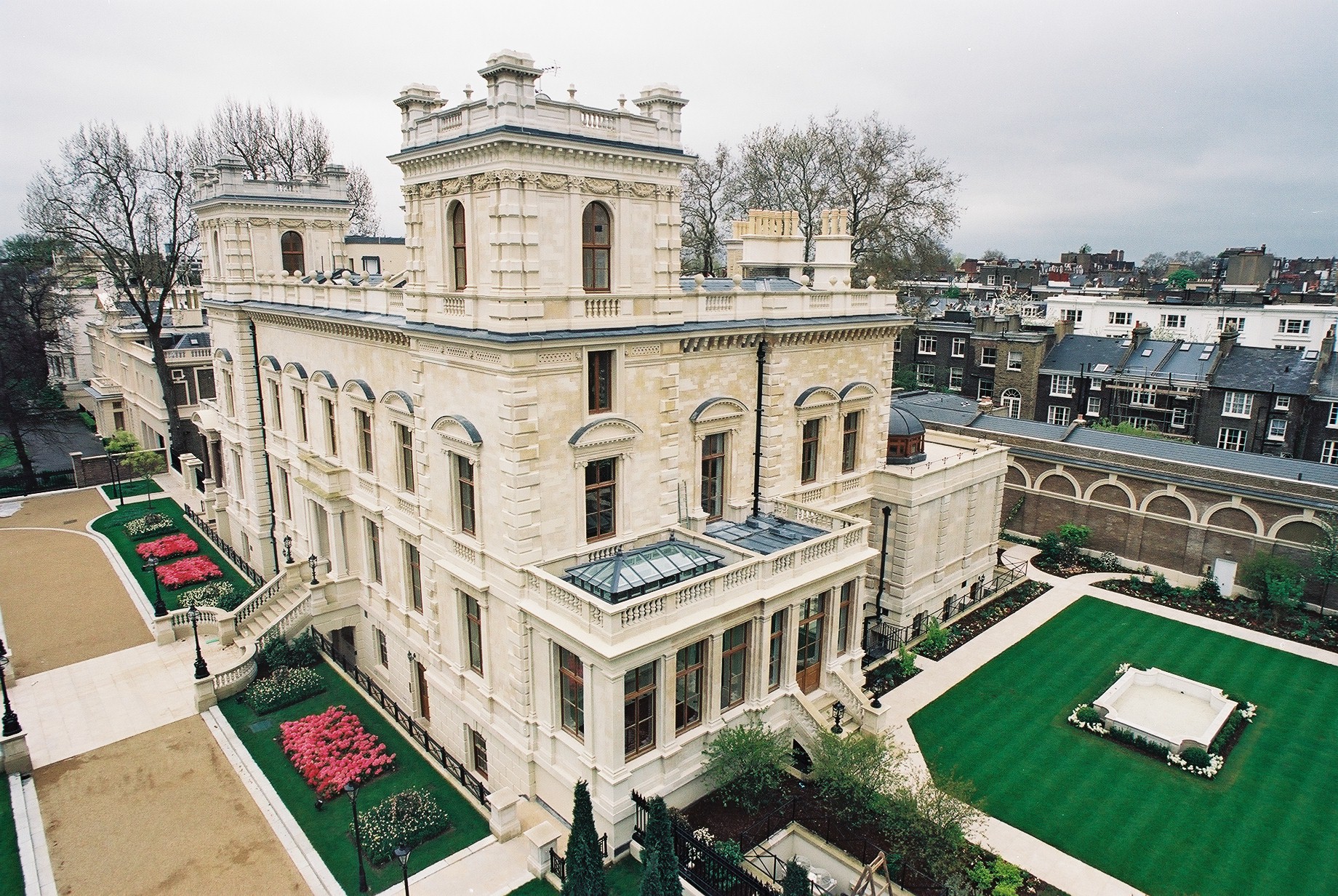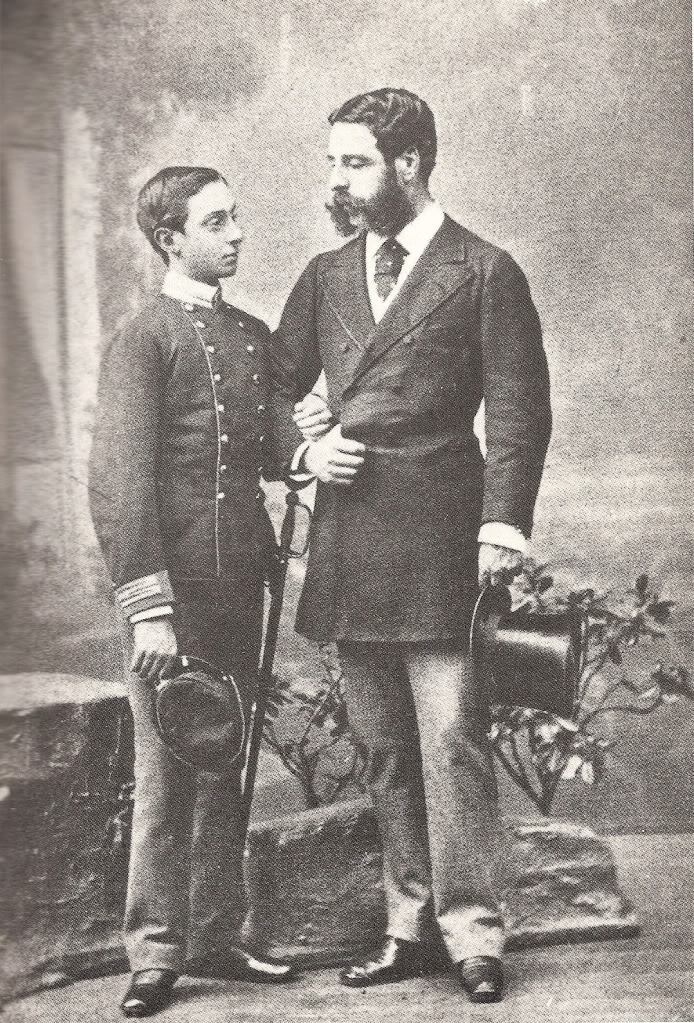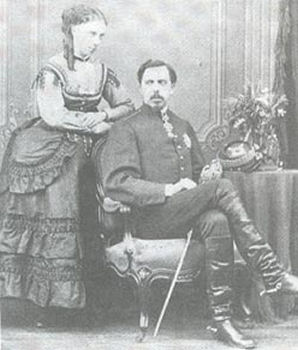|
Khalili Collection Of Spanish Metalwork
The Khalili Collection of Spanish Damascene Metalwork is a private collection assembled by the British-Iranian scholar, collector and philanthropist Nasser D. Khalili. It includes a hundred examples of damascened metalwork, in which gold or silver is pressed into an iron surface to create fine decoration. It is one of eight collections assembled, conserved, published and exhibited by Khalili, each of which is considered among the most important in its field. The collection includes art works from 1850 to the early twentieth century, including many from the workshop of Plácido Zuloaga and other works from artists trained or influenced by Zuloaga. Almost all the works are from Eibar or Toledo. Khalili, who also owns the world's largest private collection of Islamic art, first encountered damascening in that context, and regards Spain as having "raised the art to the pinnacle of perfection" so began to collect Spanish damascene as well. Khalili, Nasser D. "Foreword" in The col ... [...More Info...] [...Related Items...] OR: [Wikipedia] [Google] [Baidu] |
Nasser Khalili
Sir Nasser David Khalili ( fa, ناصر داوود خلیلی, born 18 December 1945) is a British-Iranian scholar, collector, and philanthropist based in London. Born in Iran and educated at Queens College, City University of New York and the School of Oriental and African Studies in London, he is now a British citizen."Biographical Notes" in Earle, Joe (ed.) ''Shibata Zeshin: Masterpieces of Japanese Lacquer from the Khalili Collection''. London: Kibo Foundation, 1997. p. 80. Khalili has assembled eight art collections—the Khalili Collections—each considered among the most important in its field. These collections total 35,000 artworks and include the largest private collection of Islamic art and a collection of Japanese art rivalling that of the Japanese imperial family. He has spent tens of millions of pounds on conserving, researching, and documenting the collections, publishing more than seventy volumes of catalogues and research so far. Exhibitions drawn from the coll ... [...More Info...] [...Related Items...] OR: [Wikipedia] [Google] [Baidu] |
Gothic Architecture
Gothic architecture (or pointed architecture) is an architectural style that was prevalent in Europe from the late 12th to the 16th century, during the High and Late Middle Ages, surviving into the 17th and 18th centuries in some areas. It evolved from Romanesque architecture and was succeeded by Renaissance architecture. It originated in the Île-de-France and Picardy regions of northern France. The style at the time was sometimes known as ''opus Francigenum'' (lit. French work); the term ''Gothic'' was first applied contemptuously during the later Renaissance, by those ambitious to revive the architecture of classical antiquity. The defining design element of Gothic architecture is the pointed or ogival arch. The use of the pointed arch in turn led to the development of the pointed rib vault and flying buttresses, combined with elaborate tracery and stained glass windows. At the Abbey of Saint-Denis, near Paris, the choir was reconstructed between 1140 and 1144, draw ... [...More Info...] [...Related Items...] OR: [Wikipedia] [Google] [Baidu] |
Alfonso XII Of Spain
Alfonso XII (Alfonso Francisco de Asís Fernando Pío Juan María de la Concepción Gregorio Pelayo; 28 November 185725 November 1885), also known as El Pacificador or the Peacemaker, was King of Spain from 29 December 1874 to his death in 1885. After a revolution that deposed his mother Isabella II from the throne in 1868, Alfonso studied in Austria and France. His mother abdicated in his favour in 1870, and he returned to Spain as king in 1874 following a military coup against the First Republic. Alfonso died aged 27 in 1885, and was succeeded by his son, Alfonso XIII, who was born the following year. He is the most recent monarch of Spain to have died while on the throne. Political background, early life and paternity Alfonso was born in Madrid as the eldest son of Queen Isabella II on 28 November 1857. His official father, Isabella's husband Francisco de Asís, has been generally viewed as effeminate, impotent or homosexual, leading writers to question his biological pater ... [...More Info...] [...Related Items...] OR: [Wikipedia] [Google] [Baidu] |
Janbiya
A jambiya, also spelled janbiya, jambya, jambia and janbia ( ar, جنۢبية ''janbīyah''), is a specific type of dagger with a short curved blade with a medial ridge that originated from the Hadhramaut region of Yemen. They have spread all over the Middle East as well as South Asia and Southeast Asia. Men typically above the age of 14 wear it as an accessory to their clothing. Types The jambiya were taken by travelers to other cultures including the Ottoman Empire, Persia and India, where they were adopted with slight differences to the blade, hilt and scabbard. Hilt or handle A significant part of a jambiya is its hilt (handle). The ''saifani'' hilt is made of rhinoceros horn, which can cost up to $1500 per kilogram. It is used on the daggers of wealthier citizens. Different versions of ''saifani'' hilts can be distinguished by their colour. Other janbiya hilts are made of a different types of horn, wood, metal and ivory from elephants and walrus. Apart from the material ... [...More Info...] [...Related Items...] OR: [Wikipedia] [Google] [Baidu] |
Khalili Collection Spanish Metalwork ZUL114
Khalili ( ar, خلیلي) is a common Arabic-based surname, meaning "originating from Al-Khalil also known as Hebron". It is composed of root word Khalil (meaning "companion" or "friend") plus the Arabic suffix "i" meaning "from" or "of". Khalili is also commonly used in Persian, Afghani and other Muslim surnames. Khalili may refer to: Persons Khalili *Abbas Khalili, also known as Abbas al-Khalili (1896–1972), Iraqi-born Iranian diplomat, newspaper publisher * Abdul Khalili (born 1992), full name Abdul Rahman Khalili, Swedish football player of Palestinian origin *Anousheh Khalili (born 1983), Iranian-American singer-songwriter *Aram Khalili (born 1989), Norwegian football player of Iranian Kurdish origin *Fowzieh Khalili (born 1958), Indian female cricketer *Imad Khalili (born 1987), Swedish football player of Palestinian origin *Karim Khalili, Afghani politician, Vice President of Afghanistan *Khalilullah Khalili (1907–1987), alternative spellings Khalilollah, Khalil Ull ... [...More Info...] [...Related Items...] OR: [Wikipedia] [Google] [Baidu] |
Infante Jaime, Duke Of Madrid
Jaime de Borbón y de Borbón-Parma, known as Duke of Madrid and as Jacques de Bourbon, Duke of Anjou in France (27 June 1870 – 2 October 1931), was the Carlism, Carlist claimant to the Line of succession to the Spanish throne, throne of Spain under the name Jaime III and the Legitimist claimant to the throne of France as Jacques I. Family Don Jaime never married and probably had no children. Parents Don Jaime's father, Carlos, Duke of Madrid, Carlos de Borbón (1848–1909), as Carlos VII was the 4th successive claimant to the Carlist throne (1868–1909) and later as Charles XI a legitimist claimant to the French one (1887–1909). Don Jaime's mother, Princess Margherita of Bourbon-Parma, Marguerite de Bourbon-Parme (1847–1893), was daughter to the second-last ruling Duke of Parma and sister to the last ruler of the Duchy of Parma. In 1894 Don Jaime's father remarried with Berthe de Rohan, an Austrian aristocrat and a distant descendant to a House of Rohan, branch of F ... [...More Info...] [...Related Items...] OR: [Wikipedia] [Google] [Baidu] |
Third Carlist War
The Third Carlist War ( es, Tercera Guerra Carlista) (1872–1876) was the last Carlist War in Spain. It is sometimes referred to as the "Second Carlist War", as the earlier "Second" War (1847–1849) was smaller in scale and relatively trivial in political consequence. Leading up to the war, Queen Isabella II abdicated the throne in 1868, and the unpopular Amadeo I, son of the King of Italy, was proclaimed King of Spain in 1870. In response, the Carlist pretender, Carlos VII, tried to earn the support of various Spanish regions by promising to reintroduce various area-specific customs and laws. The Carlists proclaimed the restoration of Catalan, Valencian and Aragonese fueros (charters) which had been abolished at the beginning of the 18th century by King Philip V in his unilateral Nueva Planta decrees. The call for rebellion made by the Carlists was echoed in Catalonia and especially in the Basque region (Gipuzkoa, Álava, Biscay and Navarre), where the Carlists managed to de ... [...More Info...] [...Related Items...] OR: [Wikipedia] [Google] [Baidu] |
House Of Bourbon
The House of Bourbon (, also ; ) is a European dynasty of French origin, a branch of the Capetian dynasty, the royal House of France. Bourbon kings first ruled France and Navarre in the 16th century. By the 18th century, members of the Spanish Bourbon dynasty held thrones in Spain, Naples, Sicily, and Parma. Spain and Luxembourg have monarchs of the House of Bourbon. The royal Bourbons originated in 1272, when the youngest son of King Louis IX married the heiress of the lordship of Bourbon. Anselme, Père. ‘'Histoire de la Maison Royale de France'’, tome 4. Editions du Palais-Royal, 1967, Paris. pp. 144–146, 151–153, 175, 178, 180, 185, 187–189, 191, 295–298, 318–319, 322–329. (French). The house continued for three centuries as a cadet branch, serving as nobles under the Direct Capetian and Valois kings. The senior line of the House of Bourbon became extinct in the male line in 1527 with the death of Charles III, Duke of Bourbon. This made the junior Bour ... [...More Info...] [...Related Items...] OR: [Wikipedia] [Google] [Baidu] |
Infante Carlos, Duke Of Madrid
''Don'' Carlos de Borbón y Austria-Este (Spanish: ''Carlos María de los Dolores Juan Isidro José Francisco Quirico Antonio Miguel Gabriel Rafael''; French: ''Charles Marie des Douleurs Jean Isidore Joseph François Cyr Antoine Michel Gabriel Raphaël''; 30 March 1848 – 18 July 1909) was the Carlist claimant to the throne of Spain from 1868 (his father's Spanish renunciation), and the Legitimist claimant to the throne of France after the death of his father in 1887. Life Carlos was born in Ljubljana, the capital of Carniola in what is now Slovenia, the elder son of Infante Juan, Count of Montizón and of his wife Maria Beatrix of Austria-Este. His name in full was ''Carlos María de los Dolores Juan Isidro José Francisco Quirico Antonio Miguel Gabriel Rafael''. As an infant he lived with his family briefly in London where his younger brother Alfonso was born. After their father, considered too liberal for Carlist tastes, left their mother, the boys lived with her in Modena. H ... [...More Info...] [...Related Items...] OR: [Wikipedia] [Google] [Baidu] |
Monogram
A monogram is a motif made by overlapping or combining two or more letters or other graphemes to form one symbol. Monograms are often made by combining the initials of an individual or a company, used as recognizable symbols or logos. A series of uncombined initials is properly referred to as a cypher (e.g. a royal cypher) and is not a monogram. History Monograms first appeared on coins, as early as 350 BC. The earliest known examples are of the names of Greek cities which issued the coins, often the first two letters of the city's name. For example, the monogram of Achaea consisted of the letters alpha (Α) and chi (Χ) joined together. Monograms have been used as signatures by artists and craft workers on paintings, sculptures and pieces of furniture, especially when guilds enforced measures against unauthorized participation in the trade. A famous example of a monogram serving as an artist's signature is the "AD" used by Albrecht Dürer. Christograms Over the centurie ... [...More Info...] [...Related Items...] OR: [Wikipedia] [Google] [Baidu] |
Casimir Lefaucheux
Casimir Lefaucheux (; 26 January 1802 – 9 August 1852) was a French gunsmith. He was born in Bonnétable and died in Paris. Casimir Lefaucheux obtained his first patent in 1827. In 1832, he completed a drop-barrel sporting gun with paper-cased cartridges. Lefaucheux is credited with the development of one of the first efficient self-contained cartridge systems. This 1836 invention, featuring a pinfire mechanism, followed the pioneering work of Jean Samuel Pauly in 1808-1812. The Lefaucheux cartridge had a conical bullet, a cardboard powder tube, and a copper base that incorporated a primer pellet. Lefaucheux thus proposed one of the first practical breech-loading weapons. In 1846 Benjamin Houllier improved on the Lefaucheux system by introducing an entirely metallic cartridge of copper brass. In 1858 the Lefaucheux pistolet-revolver became the first metallic-cartridge revolver to be adopted by a national government, becoming the standard sidearm of the French Navy. It is tho ... [...More Info...] [...Related Items...] OR: [Wikipedia] [Google] [Baidu] |


.jpg)



